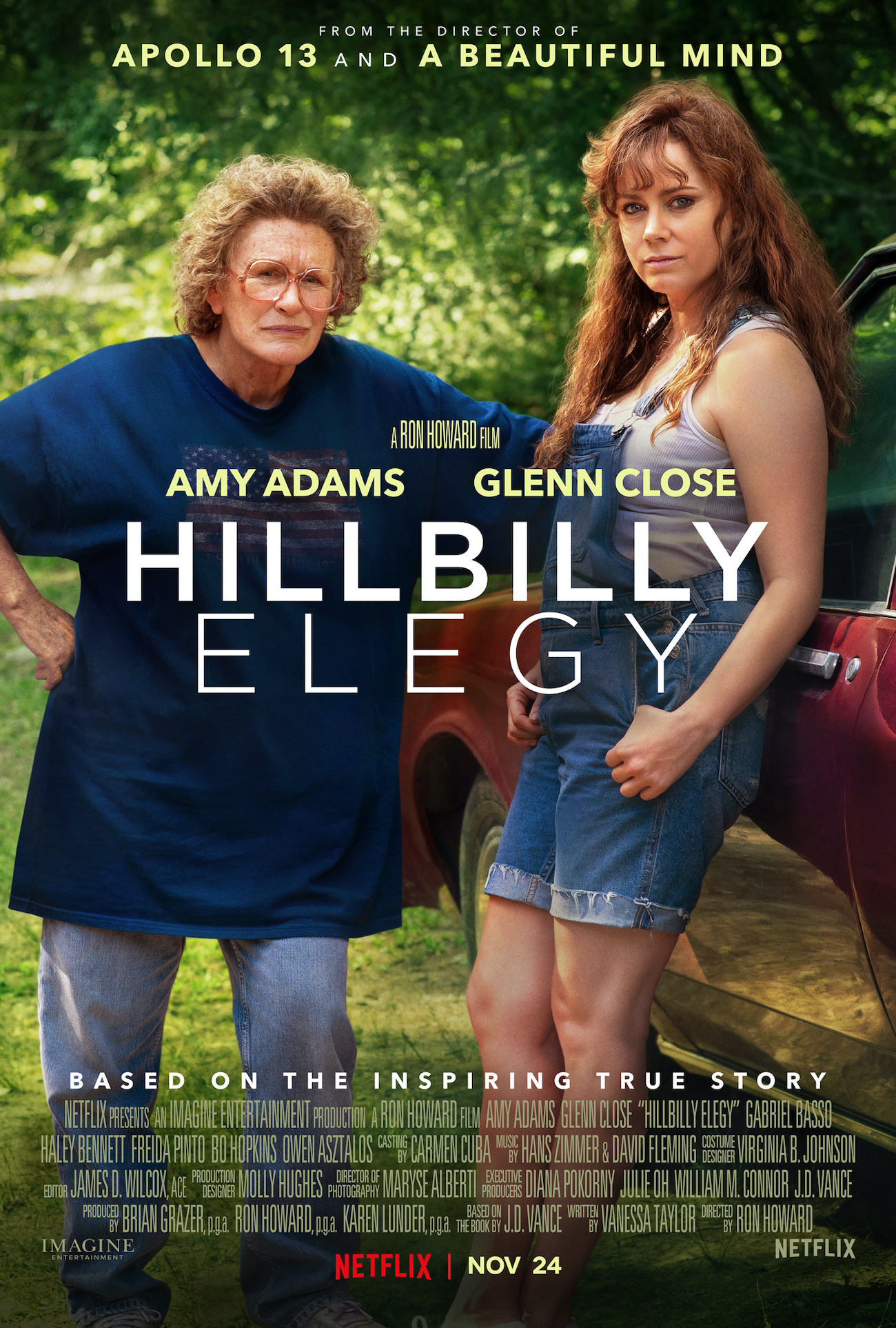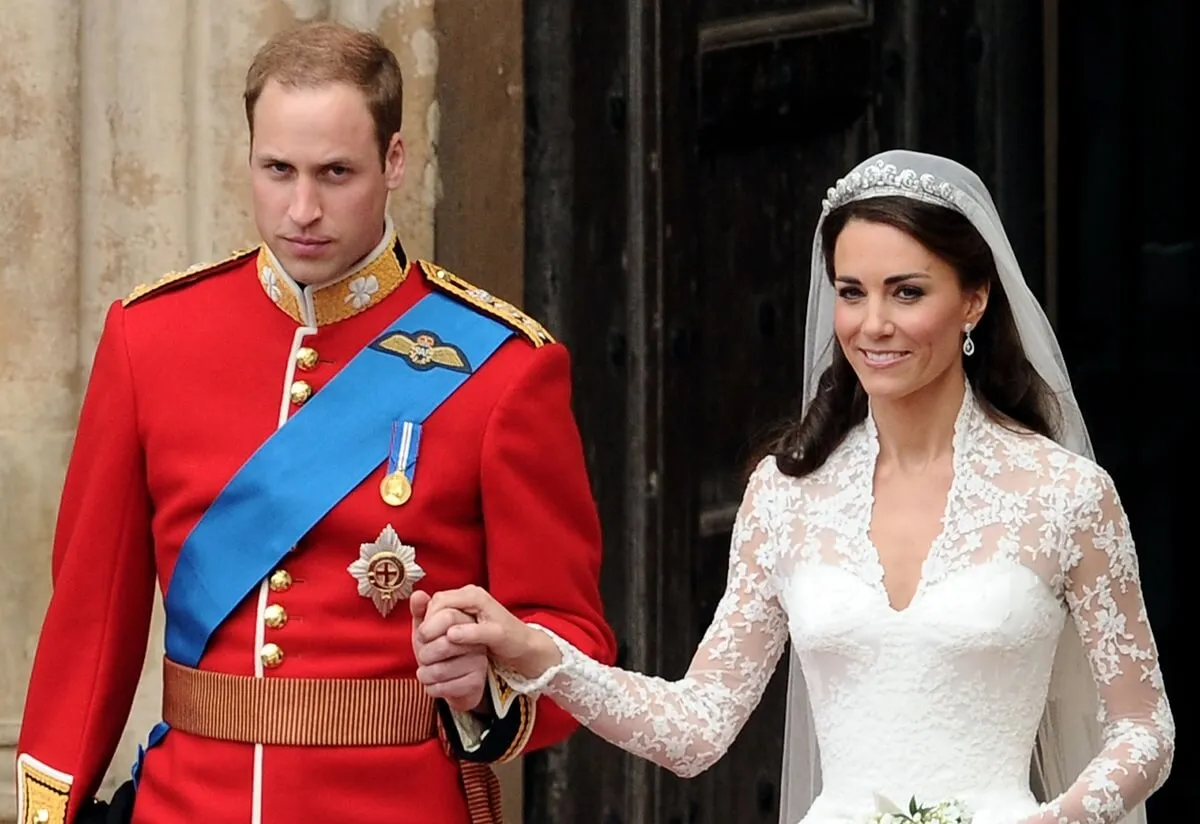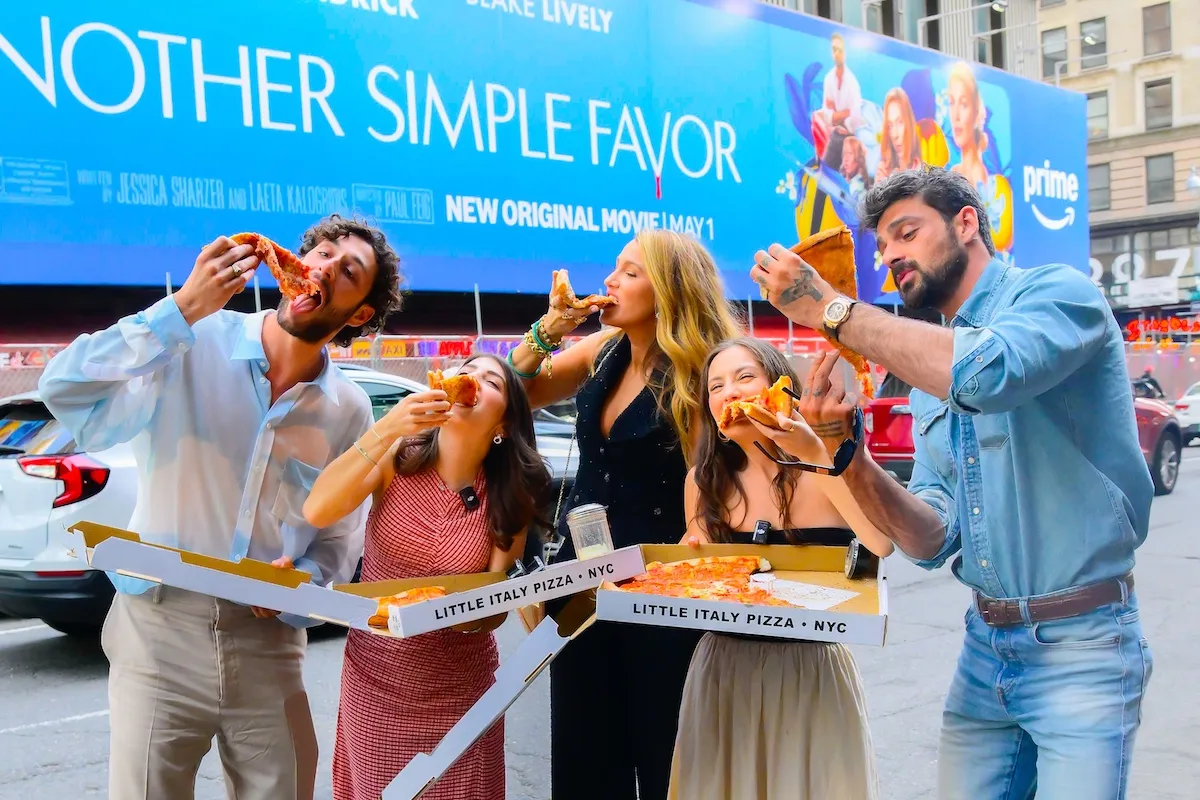The Problem With Netflix’s ‘Hillbilly Elegy’: No Real People Are in It
Netflix’s Hillbilly Elegy, based on J.D. Vance’s novel of the same name, follows a Yale student who is drawn back to his Appalachian home-town, where he grapples with his family history and the toxicity that surrounded his childhood.
Unfortunately, Ron Howard’s deft directorial hand could not save Hillbilly Elegy from its outsider perspective. The bonafide member of the Hollywood elite fails to access and portray the inner lives of his characters. Rather, stereotypical spectacles come surging to the surface in place of depth and dimension.

Amy Adams and Glenn Close may be talented actors — one throws tantrums with conviction as the other spews wisdom with a honed surly glance — yet their dramatics do not make the characters relatable. If anything, such scenes only augment the actors’ existence as pawns in the director’s game — carrying out perceptions of midwestern folk that only exist in one place: the imagination.
Amy Adams’ Bev: big scene after big scene…and still no character
In one moment, Bev is hitting her son. In another, she’s asking him to urinate into a cup. In yet another, she threatens to kill the dog. Bev is a hodgepodge of people and problems.
Bev is a mess, and Adams is always acting the part — if not overacting to the point of melodrama. She uses a full-throated yell, maniacally waves her arms, and adds occasional sarcastic commentary to ice the cake. Yet, each scene exists in isolation from the others. They do not weave together to create a character; they pop up to pander to a Ron Howard audience before trailing off and leaving no footprints behind.
The film yells, “Look at Bev! She’s at it again!” as if she is an exotic creature on display inside a zoo. And just like animals that sometimes behave erratically without explanation, so does this human who seems to possesses zero motivation for her actions.
Though the movie reveals that Bev experienced a traumatic childhood, a singular flashback does not a character make. Viewers are left wondering, who is Bev? What is she living for? What does she aim to accomplish? What defines her existence in this world?
Glenn Close’s Mamaw is less over-the-top but no less under-examined
Mamaw is arguably the savior in the story — whether or not she warrants such a designation. She wants the best for her grandson, Vance. She pushes him to succeed while pleading with Meals on Wheels to offer her more food. She is a woman trapped by circumstance — bound to her poverty.
Mamaw is the poor, old-school woman who wears raggedy clothes and has a quick tongue. She can be nothing more when all viewers know about her is that she had a kid too young.
She’s trapped because of a decision made decades ago, but what happened afterward? The film begs audiences to presume what is absent — to conclude she fell victim to all the stereotypical life hurdles that come to a woman like her living in a place like that. It’s lazy and uninspired. And, even worse, it’s harmful
Shot after shot, flashback after flashback, there’s death and there’s violence. There’s drug addiction and there’s poverty. There are broken-down buildings lining the streets and shirtless men hard at work. Yet, never is there an ounce of humanity. Never is there a person hiding underneath the pile of pigeonholed presumptions. Never is there a protagonist worth rooting for.
As for the so-called main character, what’s his name again? Oh. Vance. His mere depiction as a college student with a girlfriend left him bare. His existence lacked any identifying qualities beyond his “escaped” status. He did not unite the characters, nor did he bridge the worlds between his past and his present. He merely served to place his mom and grandmother in the spotlight, for all to ooh and aah.


